Chromosomal disorders: Chromosomes can be studied by karyotyping. It involves staining and visualizing the chromosomes in metaphase, under the microscope. After Giemsa staining, chromosomes show banding patterns. GC rich regions stain dark with G banding, bright with R banding and dark with Q banding. Abnormalities of chromosome number, like trisomy 21, or structure like inversions, can be studied by karyotyping. Microdeletions or mutations are too small to be observed by karyotyping but can be detected by FISH (fluorescence in situ hybridization).
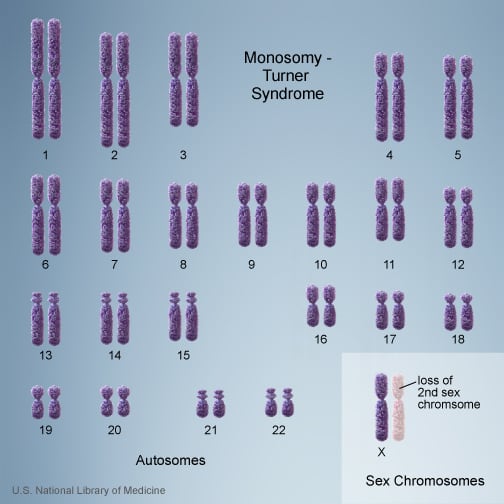
Disorders caused by aneuploidy involving autosomes and sex chromosomes
| Aneuploidy | Disorder |
| Trisomy 21 (Down syndrome) | Most cases from nondisjunction during meiosis, others from robertsonian translocation between chromosomes 14 and 21 or mosaicism; higher risk if maternal age > 35 years; mental retardation, prominent epicanthal folds, single palmar crease or simian crease, higher risk of Alzheimer’s disease and ALL, CHD and GI abnormalities |
| Trisomy 18 (Edwards syndrome) | Mental retardation, VSD, prominent occiput, receding jaw, low set ears, club foot, clenched fists |
| Trisomy 13 (Patau syndrome) | Mental retardation, cleft lip and palate, extra digits or toes, clenched fists, club foot, holoprosencephaly, CHD, urogenital defects |
| 47 XXY, 48 XXXY (Klinefelter syndrome) | Tall stature, disproportionately long arms and legs,hypogonadism, undescended testes, gynecomastia, infertility, hypospadias,psychosocial problems, higher risk of breast cancer and SLE, genotypically and phenotypically male |
| 47XYY syndrome | Tall males, learning disabilities, hypotonia, may show aggressive behavior |
| 45 XO (Turner syndrome) | Short stature, webbed neck, widely spaced nipples, streak ovaries, premature ovarian failure, lymphedema of the hands and feet, coarctation of aorta, skeletal abnormalities; monosomy X or mosaicism |
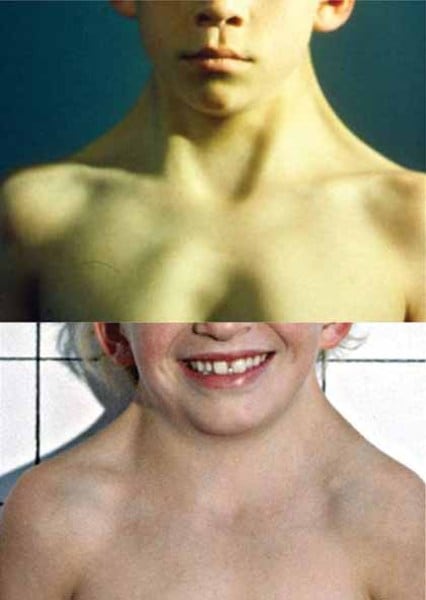
Structural abnormalities of chromosomes: They result from phenomenon that cause loss or gain of genetic material as follows:
Deletions: A portion of the chromosome is deleted or lost. It is seen in Cri Du Chat syndrome in which there is deletion of part of the 5p chromosome. It is characterized by cat-like cry, mental retardation, microcephaly, epicanthal folds, low set ears, small jaw and widely spaced eyes. Many cancers show a deletion of Tp53 tumor suppressor gene containing region of chromosome 17p. Microdeletions (deletions where <3 megabases are lost), may occur due to unequal crossing over between homologous chromosomes with multiple repeat DNA sequences. Disease producing microdeletions are seen in Prader Willi and Angelman syndromes, neurofibromatosis type 1, Charcot Marie Tooth disease, DiGeorge syndrome etc.
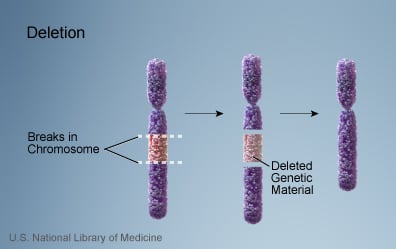
Duplications: A small part of a chromosome may be duplicated along its length, resulting in an increase in the number of genes present.
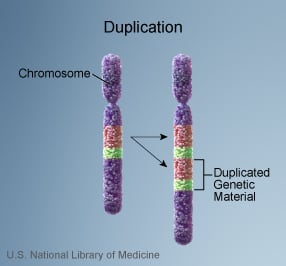
Translocations: It is the rearrangement of chromosome material involving two or more chromosomes. It may be reciprocal or Robertsonian. Reciprocal translocation occurs when genetic material is exchanged between two non-homologous chromosomes. It is often balanced i.e. there is no net gain or loss of genetic material following the translocation. Carriers of balanced translocations may themselves be normal but are at increased risk of miscarriages or giving birth to offspring with congenital defects. Translocations occurring in somatic cells may give rise to cancers e.g. Philadelphia chromosome t(9;22) causes CML.
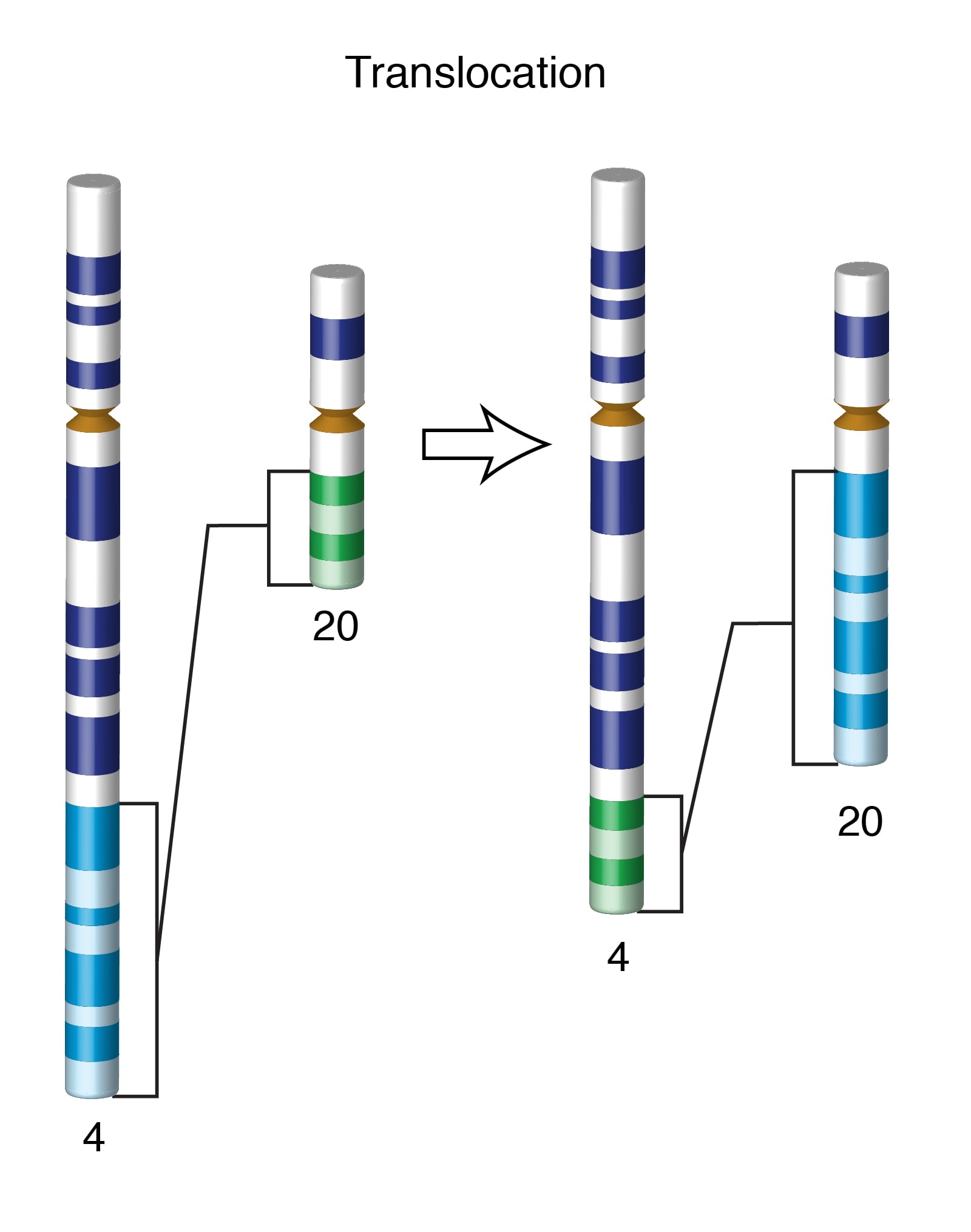
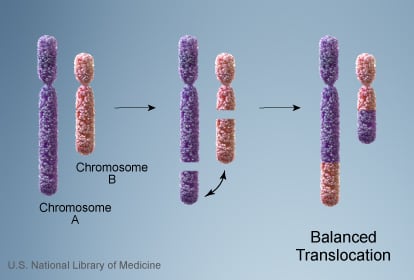
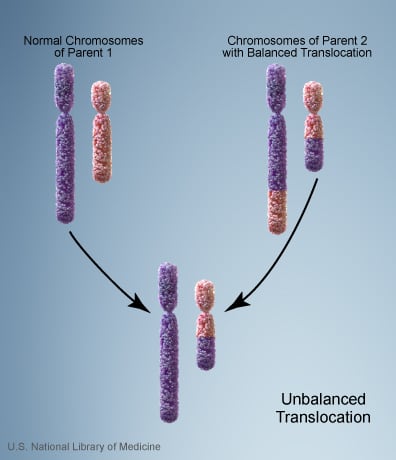
Robertsonian translocations are seen during the translocation of acrocentric chromosomes when there is a loss of the short arms and fusion of long arms. During meiosis, Robertsonian translocations may cause trisomies and monosomies.
Inversions and ring chromosome: Inversion is when a portion of a chromosome breaks off, turns upside down and is then reattached to the chromosome.
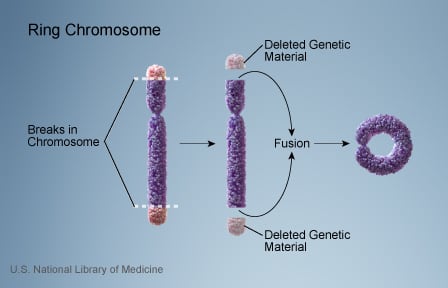
Ring chromosome forms when chromosome ends attach to form a ring. Offspring may receive an imbalance of chromosomal material.
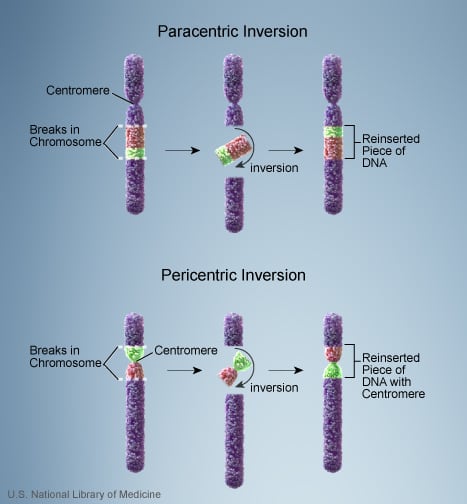
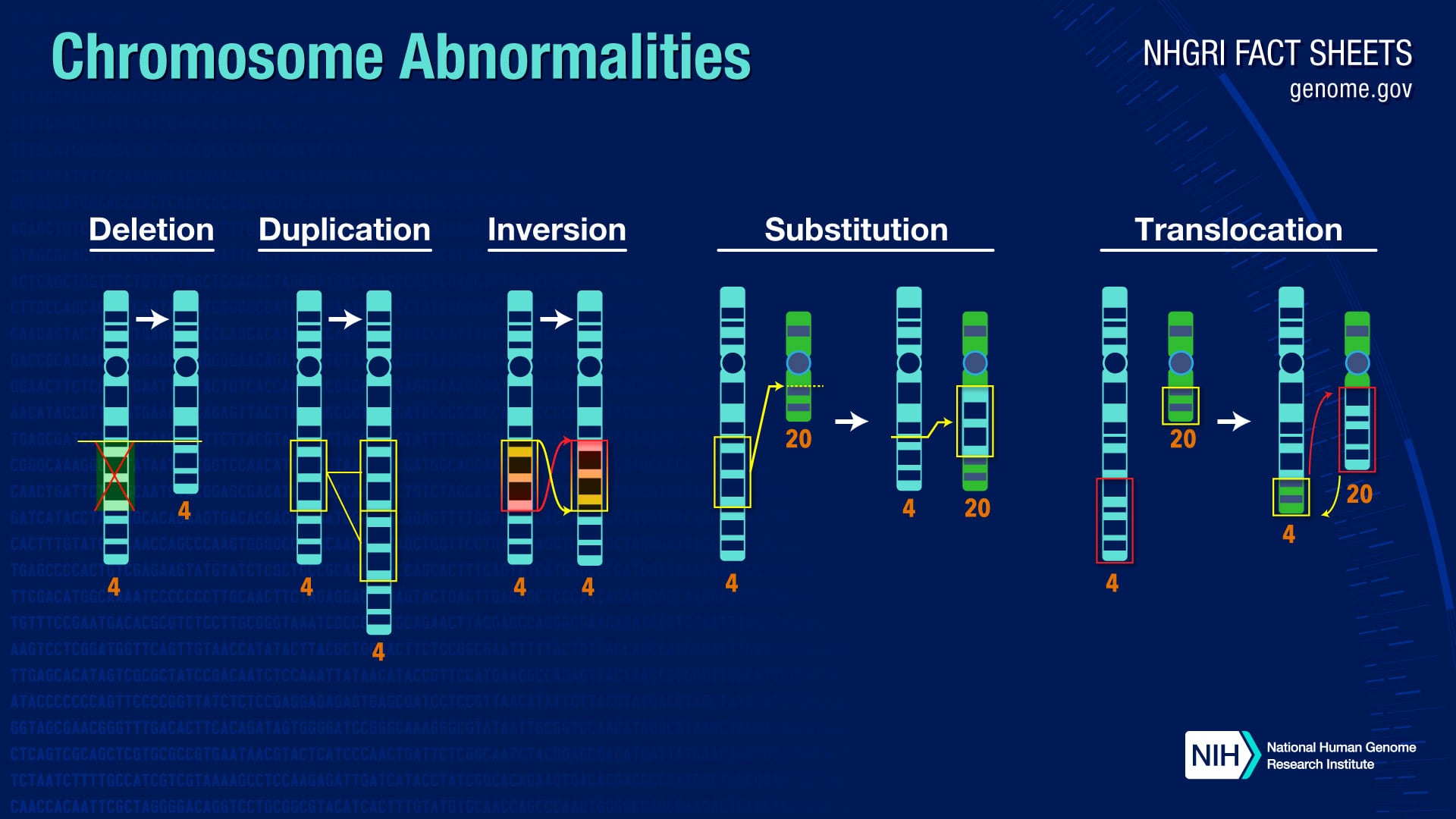
Isochromosome: It is an abnormal metacentric chromosome formed by the duplication of one arm of a normal chromosome with deletion of the other arm. Both arms of the new chromosome look like mirror images of each other.
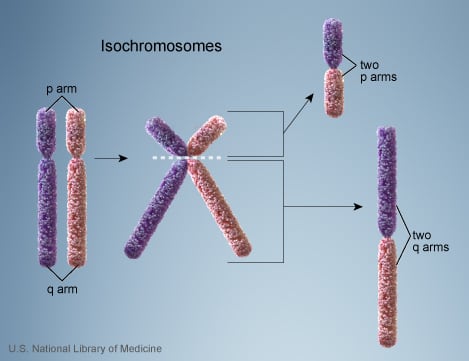
Sign up for free to take 2 quiz questions on this topic